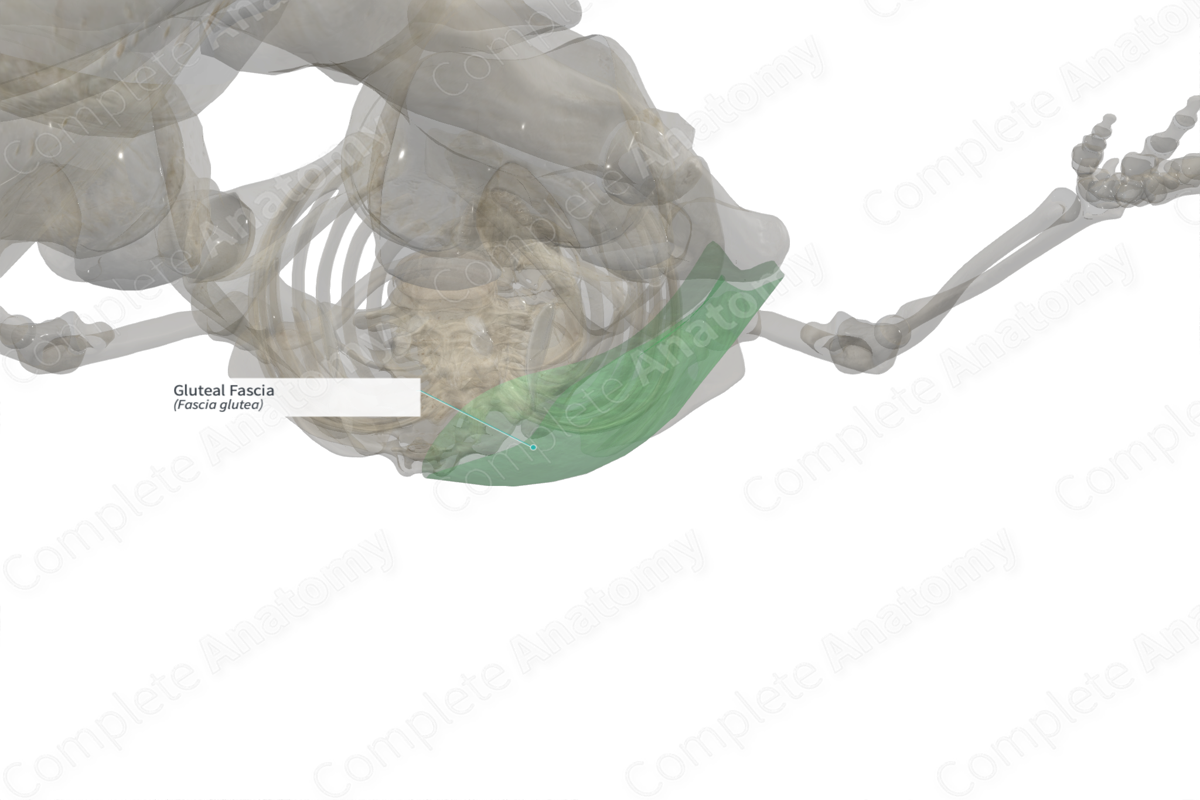
Gluteal Fascia (Right) Structure
The gluteal fascia is a deep epimysial fascia that covers the gluteal muscles. It is thin over gluteus maximus muscle and thicker over the anterior two-thirds of gluteus medius muscle, where it is known as the gluteal aponeurosis.
Related parts of the anatomy
Gluteal Fascia (Right) Anatomical Relations
Proximally, the superficial layer of the gluteal fascia is continuous with the superficial layer of the posterior layer of the thoracolumbar fascia, while its deeper layer is attached to the lateral border of the iliac crest (Huang et al., 2013). The anterior two thirds of gluteus medius muscle is covered by a thicker extension of the gluteal fascia known as the gluteal aponeurosis, which lies between the iliac crest and the superior border of the gluteus maximus muscle. Distally and laterally, both layers are continuous with the iliotibial tract, the fascia lata of the thigh, and the femur. It also attaches to the sacrum and coccyx medially.
Gluteal Fascia (Right) Function
The gluteal fascia separates the superficial surfaces of the gluteal muscles from the overlying adipose tissue. It forms a plane that enables gliding between gluteus medius and maximus muscles, in spite of their different fiber orientation.
Gluteal Fascia (Right) List of Clinical Correlates
—Proximal iliotibial syndrome
Gluteal Fascia (Right) References
Huang, B. K., Campos, J. C., Michael Peschka, P. G., Pretterklieber, M. L., Skaf, A. Y., Chung, C. B. and Pathria, M. N. (2013) 'Injury of the gluteal aponeurotic fascia and proximal iliotibial band: anatomy, pathologic conditions, and MR imaging', Radiographics, 33(5), pp. 1437-52.
Learn more about this topic from other Elsevier products
Fascia

A fascia is a connective tissue that surrounds muscles, groups of muscles, blood vessels, and nerves.




